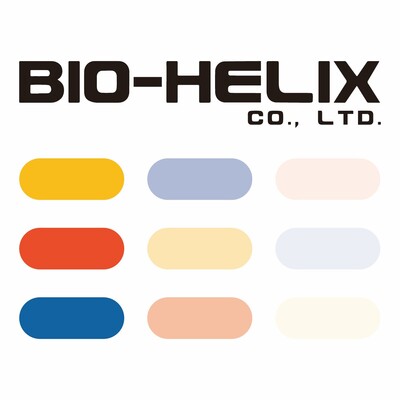
BIO-HELIX - RT002-0250
RScript™ II Reverse Transcriptase 50,000U
Size: 250 rxns
Overcome the most challenging RNA structures over a wide temperature range.
Bio-Helix RScript II Reverse Transcriptase - Engineered innovatively and specifically for both Research and Diagnostic applications for meeting all your cDNA synthesis needs and for overcoming the most challenging secondary RNA structures over a wide temperature range. Our next-generation, engineered recombinant reverse transcriptase, with improved thermostability, processivity, robustness, optimal cDNA yields, proprietary site mutations for reduced RNase H activity, and extended half-life, is the most versatile reverse transcriptase in the world for not only simply meeting the routine cDNA synthesis requirements but also enabling superior performance for even the most challenging RNA samples at hand.
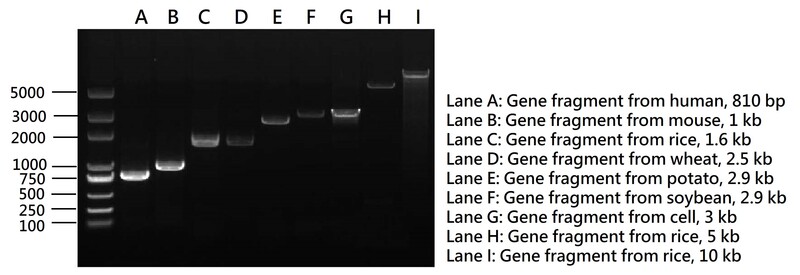
Figure 1. Amplification Performance of RT002-0250 on Long Gene Fragments
Using RNA templates from human, rat, rice, wheat, potato, and cells, RT002-0250 was employed for reverse transcription reactions, followed by PCR amplification of different gene fragment lengths. Gel electrophoresis results indicated that RT002-0250 can amplify gene fragments up to 10 kb, demonstrating effective amplification across various lengths.
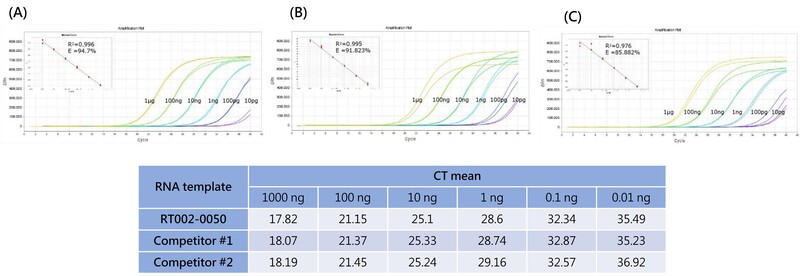
Figure 2. Sensitivity Test of RT002-0250 (A) RT002-0250 (B) Competitor #1 (C) Competitor #2
RT002-0250 was tested with different concentrations (1000 ng, 100 ng, 10 ng, 1 ng, 0.1 ng, 0.01 ng) of Human RNA as templates. Amplification curves showed effective detection across a wide range of template concentrations, demonstrating good sensitivity and a linear relationship.

Figure 3. Template Concentration Test of RT002-0250 (A) RT002-0250 (B) Competitor #1 (C) Competitor #2
RT002-0250 was tested with different concentrations (3 ug, 2 ug, 1 ug, 100 ng, 10 ng, 1 ng, 100 pg, 10 pg, 1 pg) of Human RNA as templates. Agarose gel analysis showed effective detection from 3 ug to 10 ng, with superior amplification limits and band brightness compared to competitors.
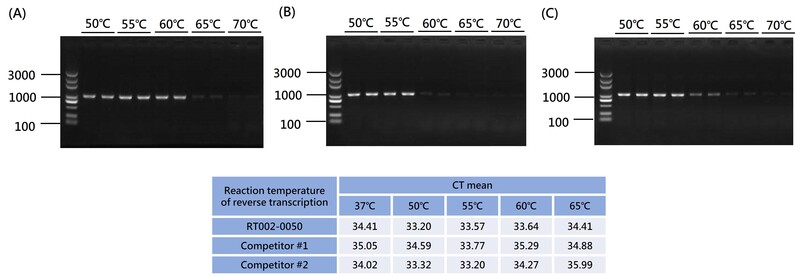
Figure 4. Test at Different Reaction Temperatures for RT002-0250 (A) RT002-0250 (B) Competitor #1 (C) Competitor #2
RT002-0250 was used at various reaction temperatures (55, 55, 60, 65, 70℃) for reverse transcription reactions with rice RNA templates, followed by PCR amplification and agarose gel analysis. The results indicated that RT002-0250 can be used in the temperature range of 37-65℃, with the optimal reaction temperature range being.
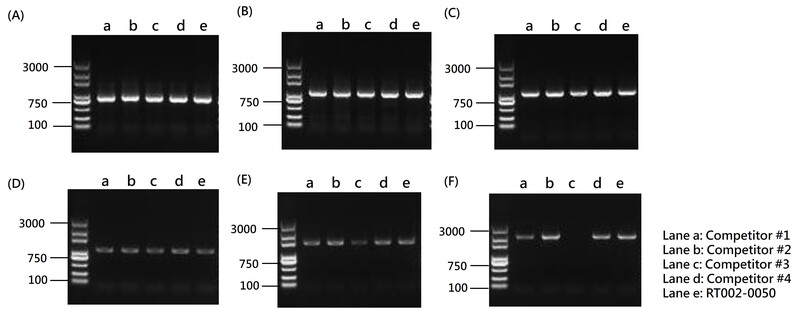
Figure 5. Amplification Capability Test of RT002-0250 on Templates from Different Species
(A) 810 bp gene fragment from human (B) 1 kb gene fragment from rat (C) 1 kb gene fragment from mouse (D) 1 kb gene fragment from rice (E) 1.6 kb gene fragment from wheat (F) 2.5 kb gene fragment from potato
Using RT002-0250 and templates from humans, rats, mice, rice, potato, and wheat, reverse transcription and PCR amplification were performed, followed by agarose gel analysis. The results showed that RT002-0250 was suitable for templates from different sources, providing excellent amplification for genes of different lengths.

Table 1. Test of RT002-0250 on Different Gene Expression Levels
Using RT002-0250 and rice RNA as the template, reverse transcription and qPCR were performed on various target genes, including Actin gene (highly expressed gene), H1 gene (low-expressed gene, 64% GC), A2 gene (moderately expressed gene, 53% GC). Analysis of CT values indicated that RT002-0250 could handle templates of various complexities, effectively performing reverse transcription for genes with low to high expression levels.
| Name | Download |
|---|---|
| PROTOCOL | Bio-Helix_RT002-0250_RT002-0050_Protocol_V2_20240401.pdf |
| Safety Data Sheet|SDS | Bio-Helix_RT002-0250_RT002-0050_MSDS_V1.pdf |